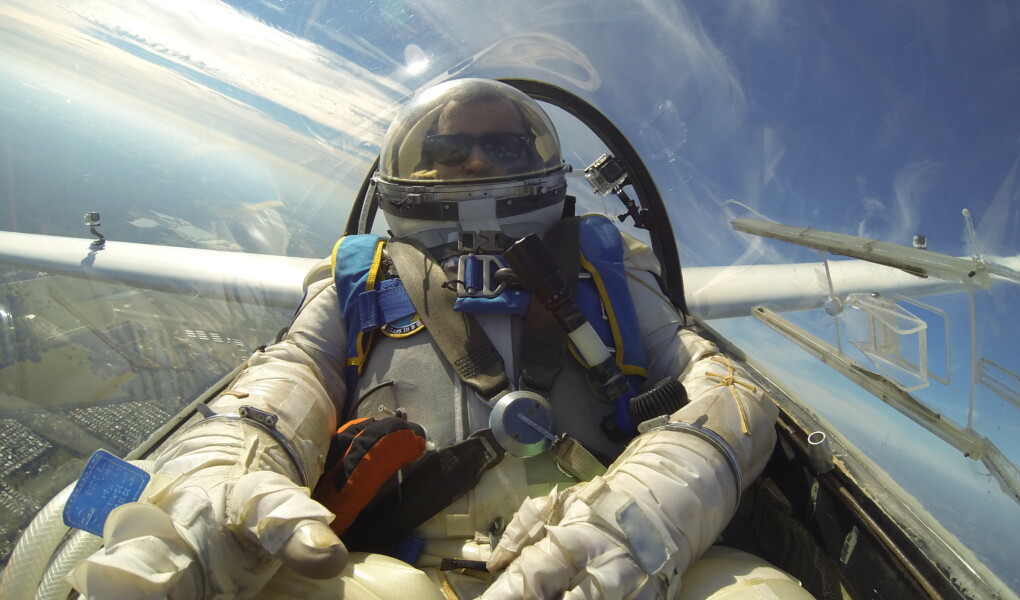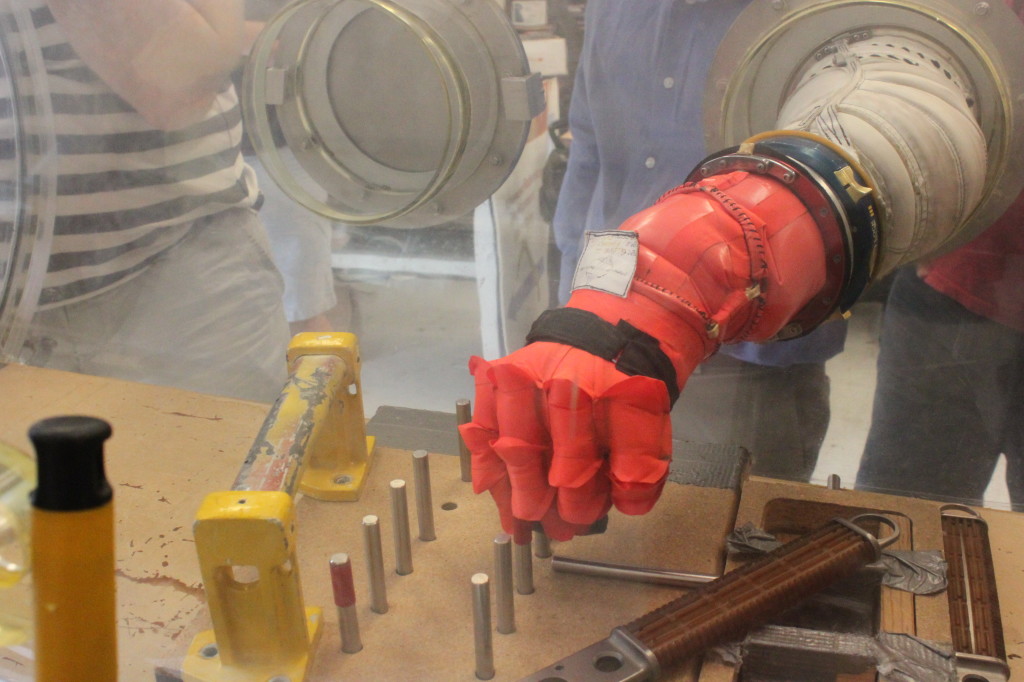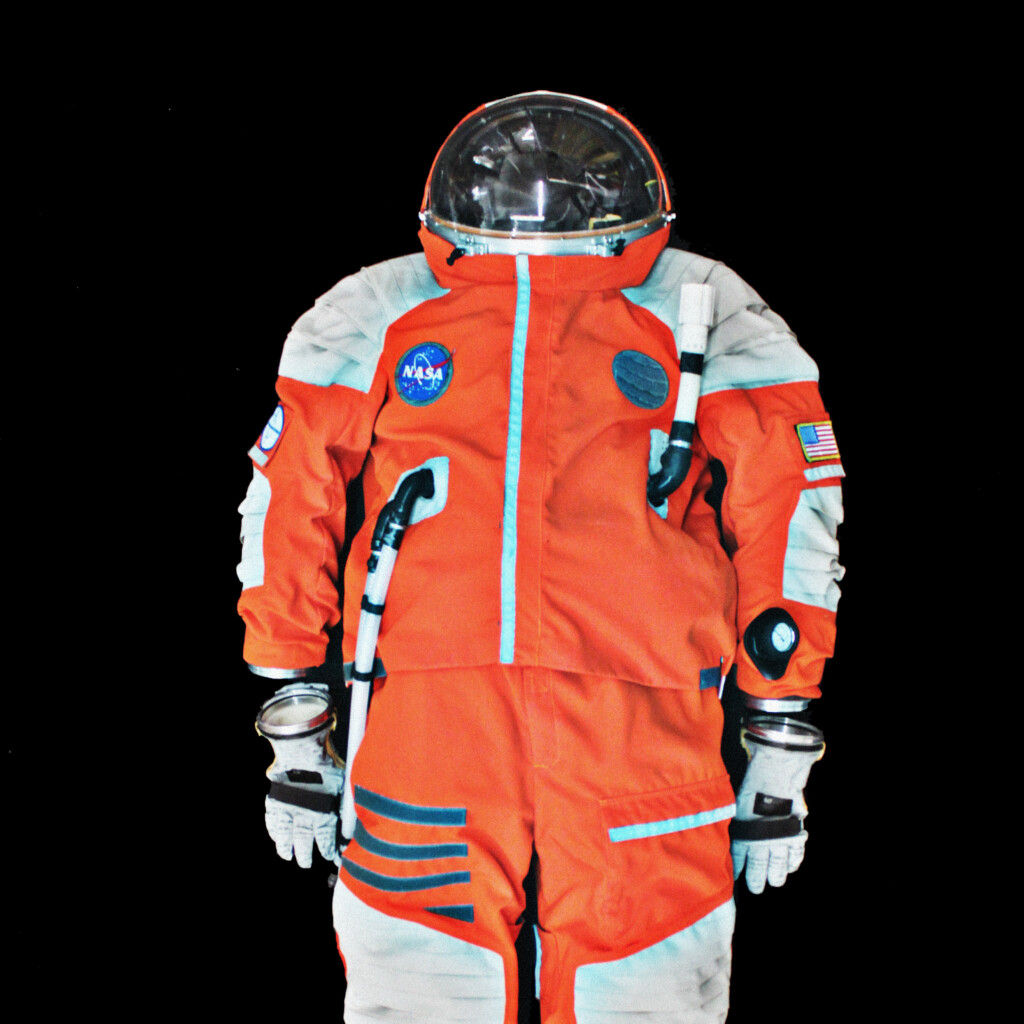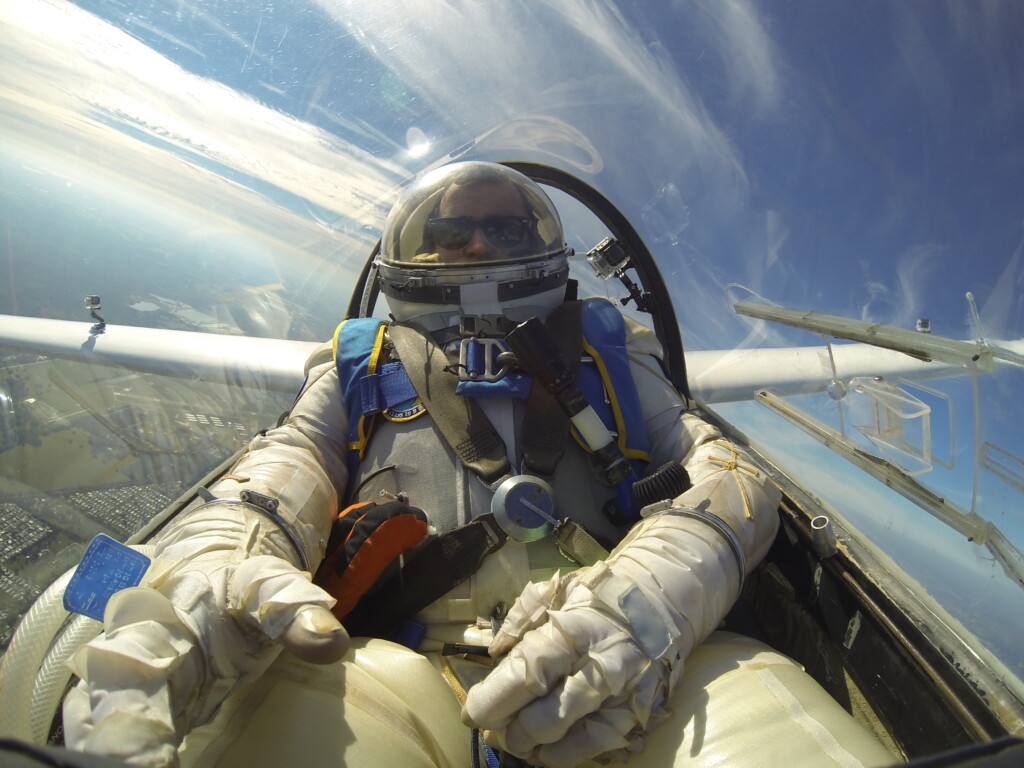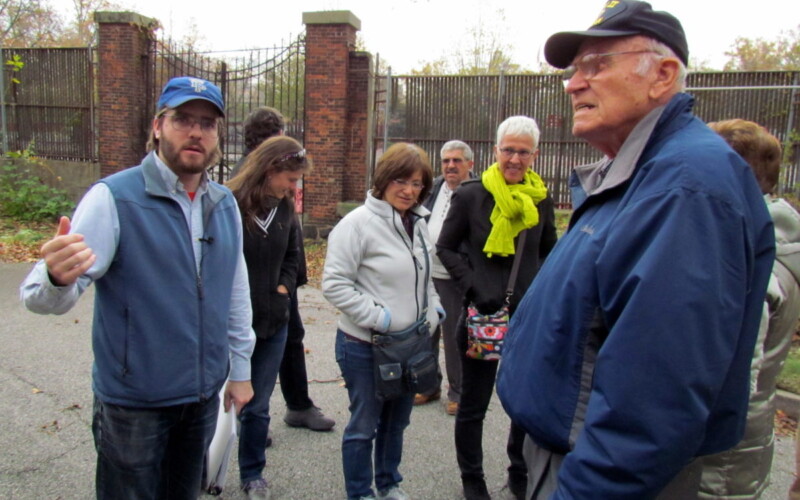Inside the Brooklyn Navy Yard, on the fifth floor of the cavernous Building 280, sits a small studio with very large ambitions. Inside you will find bolts of high-tech fabrics, spools of nylon chord, helmets and gloves of all varieties, and a small team of designers.
This is the home of Final Frontier Design, a company that designs and builds space suits for the burgeoning commercial space travel industry. While the industry is in its very earliest stages, Final Frontier is working with a number of companies and with NASA to create a better, safer, and more cost-effective suit to take citizens into space.
Founded by Ted Southern and Nikolay Moiseev, FFD started out with a simple goal: design a better glove. NASA regularly hosts competitions that invite the public to help solve its enormous and complex engineering challenges. In 2007, Ted and Nik each entered the Astronaut Glove Challenge, which asked contestants to develop “innovative glove design concepts to reduce the effort needed to perform tasks during spacewalks.” Neither of them won, but they decided to team up for the 2009 round, for which they were awarded second prize and $100,000 – perfect seed money for their new business.
The coupling of the two designers brings together two very different but complementary sets of skills and experiences. A graduate of Pratt Institute, Ted, the company president, has long worked in film and theater, designing and building technical garments and costumes. You have likely seen his handiwork, as he has built pieces for Cirque du Soleil stage shows, as well as many of the angel wings for the long-running Victoria’s Secret campaign. This interest in extending the capabilities of the human body beyond the tips of our fingers and toes is what drew him to the glove design. “I’ve been obsessed with hands and hand functionality for a long time,” he told us on a visit to the studio last year.
While Ted came to space suit engineering by a somewhat unlikely path, Nik, FFD’s chief engineer and designer, has well over 20 years of experience in the field, most of them spent working for the Soviet, and then Russian, space program. Working for Zvezda, Russia’s space suit manufacturer, Nik saw his first design reach space in 1988, aboard the Mir space station. He has also had experience working with all the current NASA designs, providing a wide spectrum of experience on both sides of the Space Race.
When you hear “space suit,” you’re probably imagining Neil Armstrong and Buzz Aldrin hopping around on the moon, or Sandra Bullock spinning all over the place. Those big, white things are known as Extra-Vehicular Activity (EVA) suits, and they are not what Final Frontier makes. They are building instead intra-vehicular (IVA) suits that are worn by space travelers while inside the spacecraft, similar to the orange ACES (Advanced Crew Escape Suit) or “pumpkin suits” that NASA astronauts currently wear. The IVA is designed to be a survival suit or a redundancy should the craft lose pressure or life support. While the NASA model currently costs around $300,000, FFD hopes to sell its product to commercial operators for around $65,000 per suit.
Commercial space flight is taking many different forms, meaning FFD’s suits could be used in some very different vehicles. SpaceX plans to use rockets, while Virgin Galactic is building winged craft that will take travelers into sub-orbital flight. Other companies like Spain’s zero2infinity plan on using balloons that can travel up to 120,000 feet, high enough to clearly see the curve of the earth. Starfighters Aerospace uses rocket-assisted F-104 fighter jets to hit 100,000 feet. All of these voyages are well into the range where a pressurized life support system is necessary, and FFD is working with many of these companies to craft suits for their unique applications.
In addition to the suits, FFD hopes to turn their R&D into other space-based applications, or even spin-off items that have wider uses. Their “comm cap,” or communications cap that astronauts wear under their helmet (you have all seen Armstrong wearing one of these) could be used by pilots, firefighters, or divers. Their compression garments, worn close to the skin to prevent swelling, could have medical applications. And their highly-moveable, heat-resistant gloves could be used by workers in many different industries that require protection and dexterity.
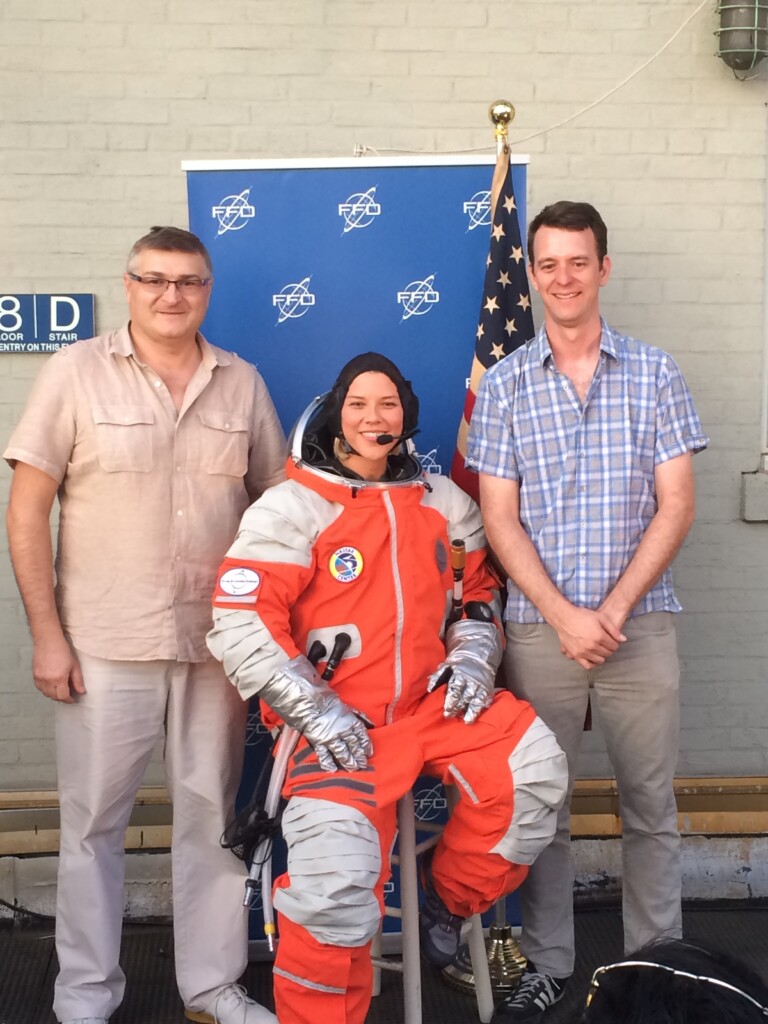
Once commercial space flight officially takes off, that doesn’t mean it will be within everyone’s reach. These trips are projected to range in price from around $75,000 for a balloon ride up to $250,000 for the Virgin Galactic flight. However, FFD let’s you get a lot of the experience of space travel without ever leaving Brooklyn. To help finance and promote their design projects, last year they launched the Space Suit Experience, in which visitors can get fully fitted into one of their space suits – the highly-customizable suit has 13 fitting points and can fit people from 5’2″ to 6’5″ – and have it pressurized. You then get to operate a flight simulator – the joystick is very tricky to handle with the pressurized gloves – and get your picture taken in their mini photo studio, so you can convince strangers that you were once an astronaut. That alone makes the $495 price tag a small price to pay.
We frequently visit Ted, Nik, and the Final Frontier Design team on our Inside Industry Tours of the Brooklyn Navy Yard, where they will teach us about the ins and outs of space suits, and we will get to see and feel many of their components.

